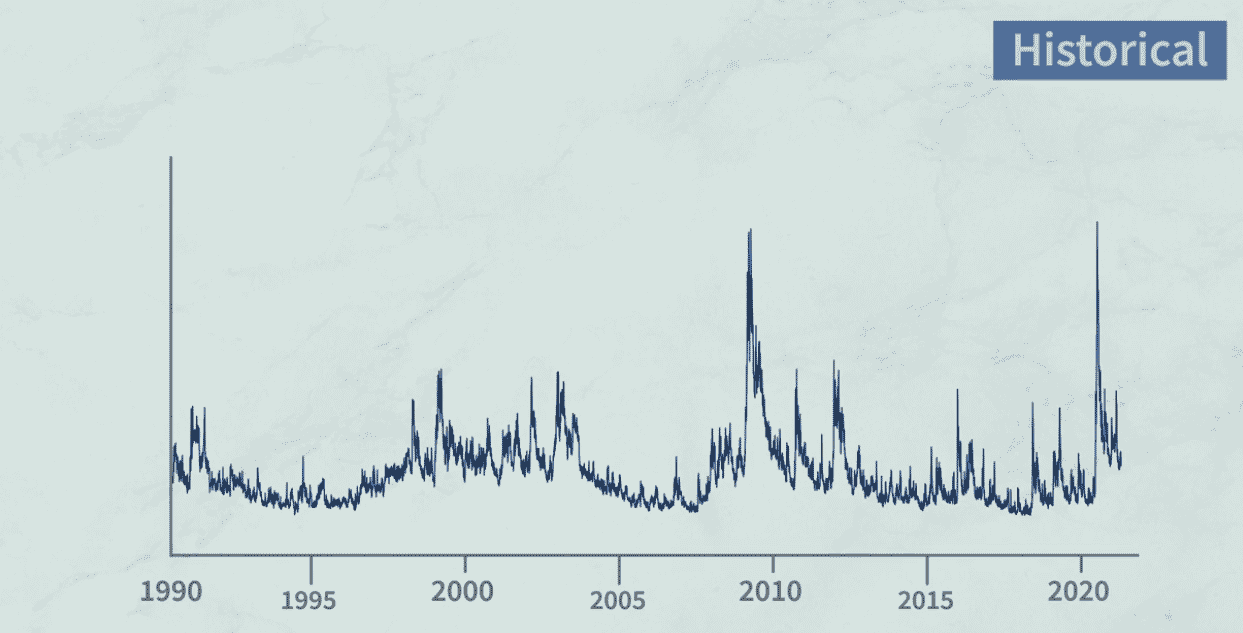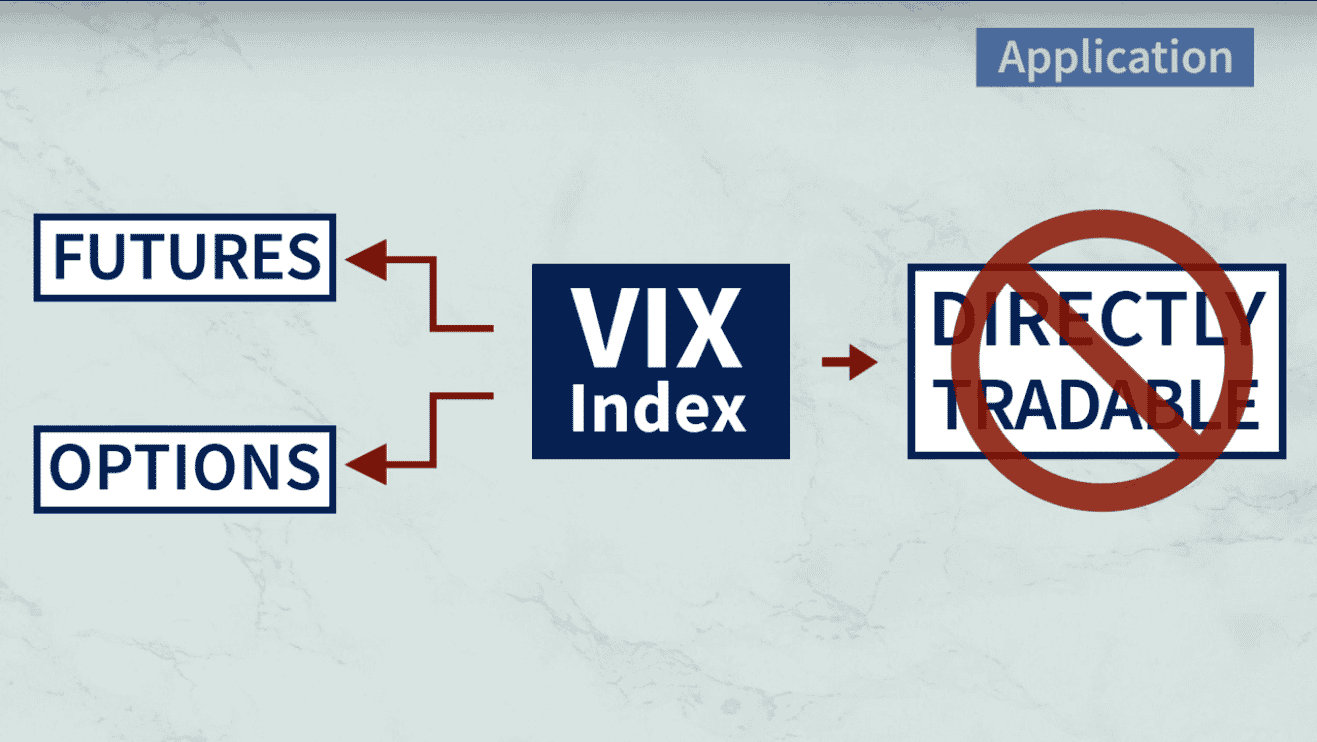What is the Volatility Index

The CBOE Volatility Indicator, sometimes known as the VIX, is a real-time index that depicts the expectations of the market on the relative magnitude of short-term price movements of the S&P 500 Index.
The study that Menachem Brenner and Dan Galai conducted in the field of financial economics is where the VIX got its start. In a series of papers that began in 1989, Brenner and Galai proposed the creation of a series of volatility indices, beginning with an index on the volatility of the stock market and moving on to the volatility of interest rates and foreign exchange rates.
These indices would be ordered in ascending order based on the type of volatility being measured. A 30-day forward forecast of volatility is produced by it since it is generated from the pricing of SPX index options with near-term expiration dates.
The rate at which prices fluctuate, also known as volatility, is frequently used as a proxy for evaluating the mood of the market. It is also, in particular, the amount of dread that those who participate in the market have. The ticker symbol of the index is the one that most people are familiar with.
It is most commonly referred to by its abbreviated form, the VIX. It was first developed by the CBOE Options Exchange, which is now responsible for its maintenance together with CBOE Global Markets. It gives a measurable gauge of market risk as well as the feelings of investors, making it a significant index in the world of trading and investing.
History of the Volatility Index

The CBOE was the first organization to launch a benchmark index with the purpose of measuring the expectations of the market regarding future volatility. Because it is a forward-looking index, it is built with the implied volatilities that are associated with the S&P 500 index options. Additionally, it reflects the consensus of the market on the expected 30-day future volatility of the S&P 500 Index.
This index is often regarded as the most accurate predictor of the overall performance of the U.S. stock market. Since its inception in 1993, the VIX has been a well-established and well-known indicator of the volatility of the stock markets in the United States. It is computed in real-time using the current values of the stocks that comprise the S&P 500 Index.
Between the hours of 3 and 9:15 in the morning and 9:30 and 4:15 in the afternoon, Eastern Standard Time (EST), calculations are carried out and values are sent. Since April 2016, CBOE has been providing access to the VIX outside of normal trading hours in the United States.
Functioning of the Volatility Index

The Volatility Index (VIX) is an indicator that aims to assess the degree to which prices of the S&P 500 can fluctuate. In other words, it assesses the level of volatility experienced by the S&P 500. The index will have a higher level of volatility in direct proportion to the magnitude of the price fluctuations it experiences, and vice versa.
The VIX is not just an index that measures volatility but also a futures market, an options market, and an exchange-traded fund market where traders may speculate or hedge against changes in the volatility of the index. In general, there are two distinct approaches that may be used to quantify volatility.
The first approach uses historical volatility as its foundation. This makes use of statistical computations based on prior prices accumulated over a certain amount of time. In order to complete this procedure, several statistical numbers need to be computed. On the historical pricing data sets, these values contain the mean, the variance, and ultimately the standard deviation.
The second technique is an inference of its value based on the pricing of options, and this is the way that is used by the VIX. Options are a type of derivative instrument, and their prices are determined by the likelihood that the current price of a certain stock will shift significantly enough to reach a specified level. The term strike price or exercise price refers to this particular level.
Calculating the Volatility Index

The values of the VIX are derived from the typical SPX options that are traded on the CBOE. These choices will no longer be available after the third Friday of the month. In a similar manner, the weekly SPX options will become invalid on every other Friday. Only SPX options with an expiration term that falls between more than 23 days and less than 37 days are taken into consideration.
Although the formula is difficult to understand from a mathematical standpoint, it is much simpler to grasp from a conceptual standpoint. According to this hypothesis, the predicted volatility of the S&P 500 Index may be estimated by adding up the weighted values of a number of different put and call options on the SPX that cover a broad range of strike prices.
Every one of these qualified possibilities has to have a proper bid and ask prices that are not zero. These prices should indicate the market’s assessment of which options’ strike prices will be hit by the underlying equities during the remaining time until expiration, and they should be representative of that opinion by the market.
Trading the Volatility Index

The Volatility Index (VIX) has been instrumental in making it possible to trade volatility, although through the use of derivative instruments. In March of 2004, CBOE was the first to introduce an exchange-traded futures product based on the VIX. After this, in February of 2006, the first VIX options were made available to investors.
These VIX-linked securities enable investors to gain exposure to pure volatility and have resulted in the creation of a new asset class. Diversification of investment portfolios is achieved with the use of VIX-linked securities by active traders, major institutional investors, and managers of hedge funds.
This is due to the fact that there is a substantial inverse link, as shown by historical data, between market volatility and the returns of the stock market. When this happens, the returns on stocks go down while the volatility goes up, and vice versa. Direct purchases of the VIX are not possible, as is the case with all indices.
Investors have the option of taking a stake in the VIX through the use of futures or options contracts. They also have the option of doing so through exchange-traded instruments that are dependent on the VIX. The values of the VIX are used by active traders who utilize their own trading tactics as well as powerful algorithms to price the derivatives.
These derivatives are built on high beta equities as their underlying asset. The value of beta indicates the extent to which the price of a certain stock can fluctuate in comparison to the movement of an overall market index.
Traders who place wagers through the use of options on equities with such a high beta value make use of the VIX volatility values in proportions that are acceptable. They do this in order to ensure that the prices of their options trading are accurate. As a result of the VIX’s widespread use, the CBOE has begun providing customers with numerous different options for gauging the general volatility of the market.
Two examples of this type of index are the CBOE Short-Term Volatility Index and the CBOE S&P 500 3-Month Volatility Index. The former measures the volatility of the S&P 500 Index over the past nine days, while the latter measures its volatility over the past three months. The Nasdaq-100 Volatility Index and the CBOE Russell 2000 Volatility Index are both examples of products that are based on other market indices.
Impact of the Volatility Index on Other Assets

The level of volatility in a market is one of the key elements that determine the pricing and premiums of stock and index options. Since the VIX is the most frequently followed indicator of overall market volatility, it has a significant influence on the pricing or premiums of options contracts. When the VIX rises, option prices tend to follow suit and go up.
In a similar fashion, when the VIX is lower, option prices and premiums tend to be lower as well. What this helps us understand is that we need to watch the VIX values very closely in order to understand the volatility in the other financial assets. This is also why the Volatility Index is highly popular among traders worldwide. It is an extra help in determining the volatility in the forex industry and its assets.
You should know that the VIX should not be the only tool you rely on when analyzing volatility. While it is a great tool, there are many other tools that are just as good and probably more accurate in understanding the market sentiment. Always do your full research instead of sticking with just one strategy or trading method.
Forex signals are a great way to get profitable trades, even if you don’t know how to analyze chart patterns yet. Expert analysts will provide you with appropriate risk management strategies, so you don’t make the top forex mistakes like every trader. Don’t trade all the time. Trade only at the best trade set up with Forex GDP.
